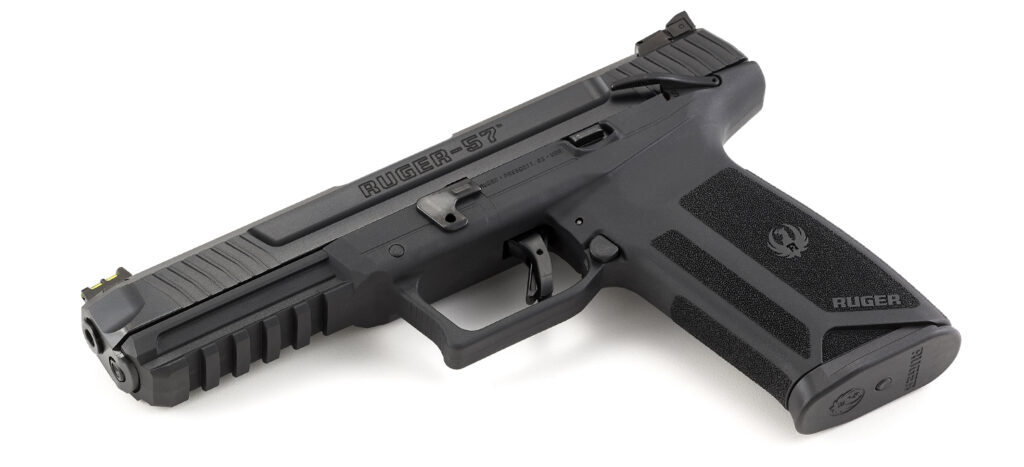I don’t know about you, but I don’t really expect to ever have to deal with shooting through Soviet body armor to stop an attacker. Of course, I’m not under the impression that we’re going to see a Soviet invasion of the U.S. in my lifetime (or ever, since the Soviet Union no longer exists).
Still, there is an appeal to knowing that the ammunition that you’re using does have serious stopping power when you hit an oncoming target.
Maybe recognizing that appeal, two firearm manufacturers, Ruger and FN Herstal (often just referred to as FN), have each released pistols chambered in 5.7x28mm. Tamara Keel writes,
Ruger’s new Ruger-57, which is sort of an FN Five-seveN for everyone, may have single-handedly revived the 5.7×28 mm round. The cartridge was developed in response to a late-Cold War need to give rear-area personnel a cartridge that could defeat Soviet body armor when fired from a submachinegun-like Personal Defense Weapon, or “PDW.” The 5.7’s original design concept was that a 5.7 mm bullet that penetrated armor would do more damage than a 9 mm or .45-caliber bullet that didn’t.
The handgun firing the same cartridge, FN’s Five-seveN was almost an afterthought to the original PDW application, which was the funky P90. On the commercial market in the U.S., the price tag of the Five-seveN kept it a very niche gun. Ammunition tended to be optimized more for use out of the PS90, the semi-automatic, 16-inch carbine-barreled commercial version of the P90, featuring full-metal-jacketed or Hornady V-Max varmint-type bullets.
The Ruger-57 made a huge splash at SHOT, however, and is bringing the exotic little bottleneck round and its concomitant 20-plus-round magazine capacities to a much more affordable price bracket than the original FN pistol. In a development that is almost certainly related, Speer is releasing a 40-grain Gold Dot hollow-point defensive load that is supposed to be well set up to achieve good terminal ballistics out of a pistol-length barrel.
Now, as we’ve noted before in previous articles, Keel points out that the stopping power of the cartridge is probably not the most important consideration when choosing an ammunition type. Your accuracy with that ammunition is more important (if you can’t hit what you’re aiming at, your ammunition isn’t going to have any stopping power against the intended target). Keel also points out that ammunition availability of 5.7x28mm rounds could be something worth thinking through. If ammunition becomes scarce, less common ammunition could end up making any particular firearm a fancy paperweight.
Still, if you want something a little different that has stopping power, it may be worth taking a look at these pistols by Ruger and FN.

